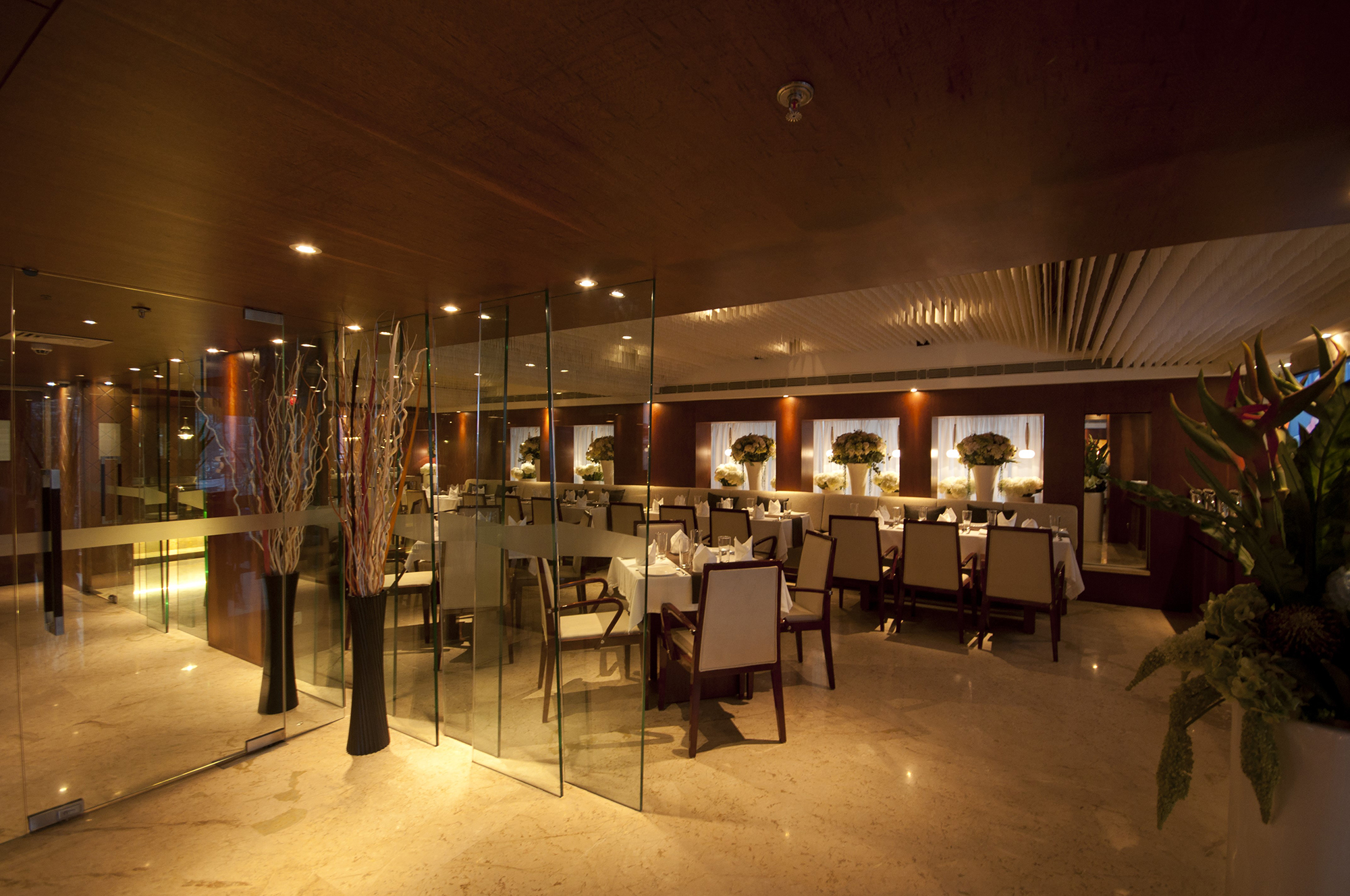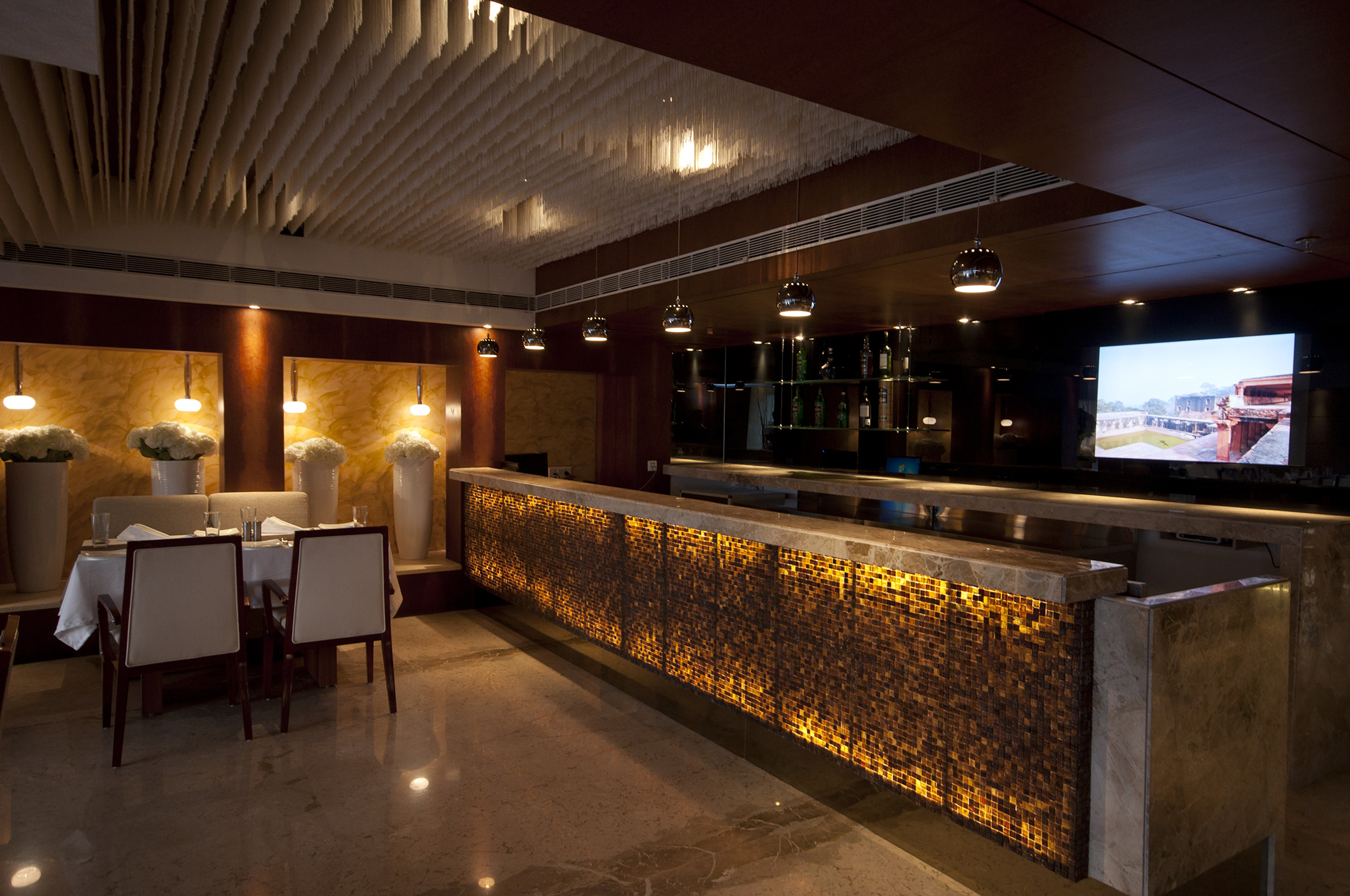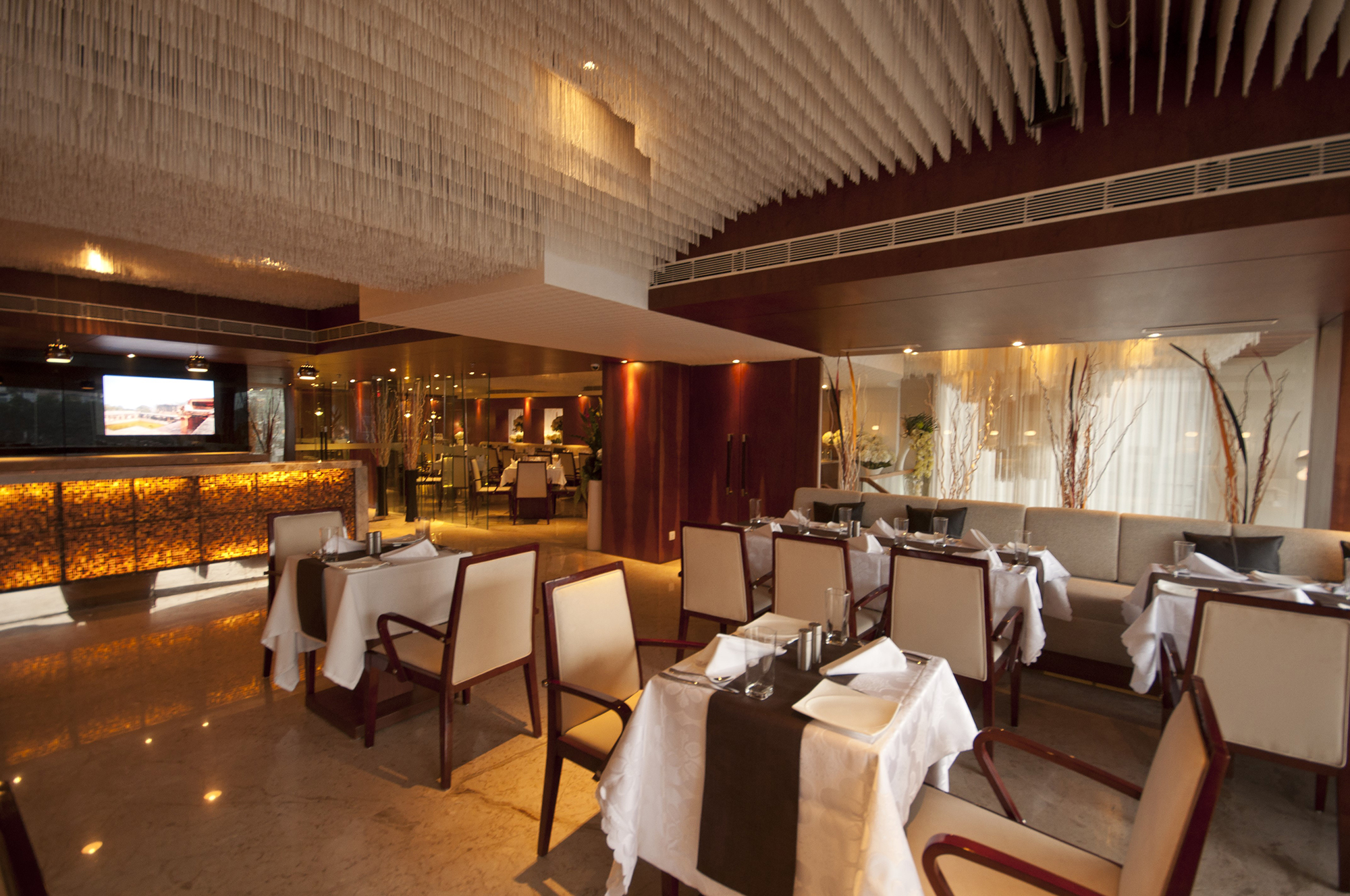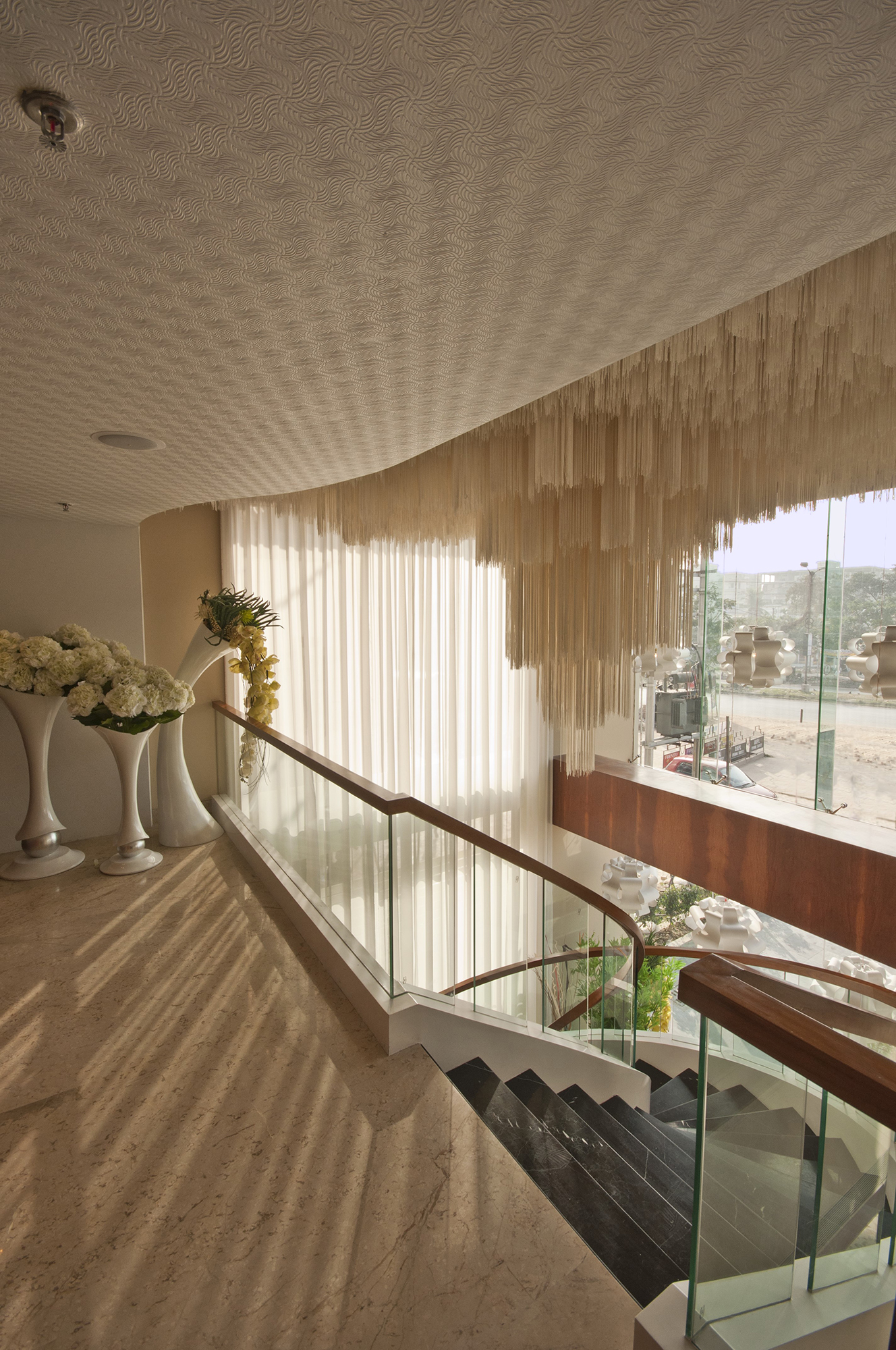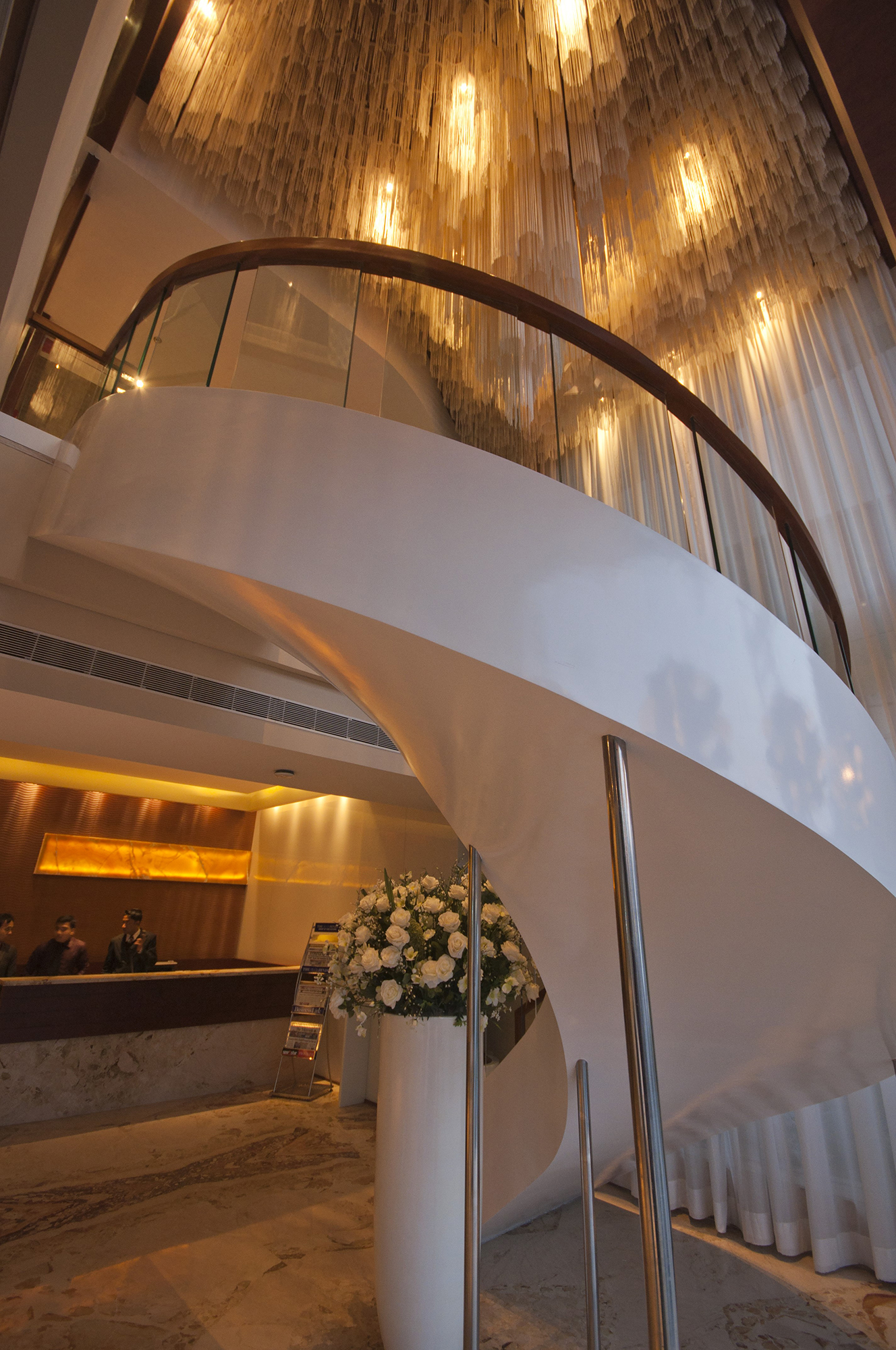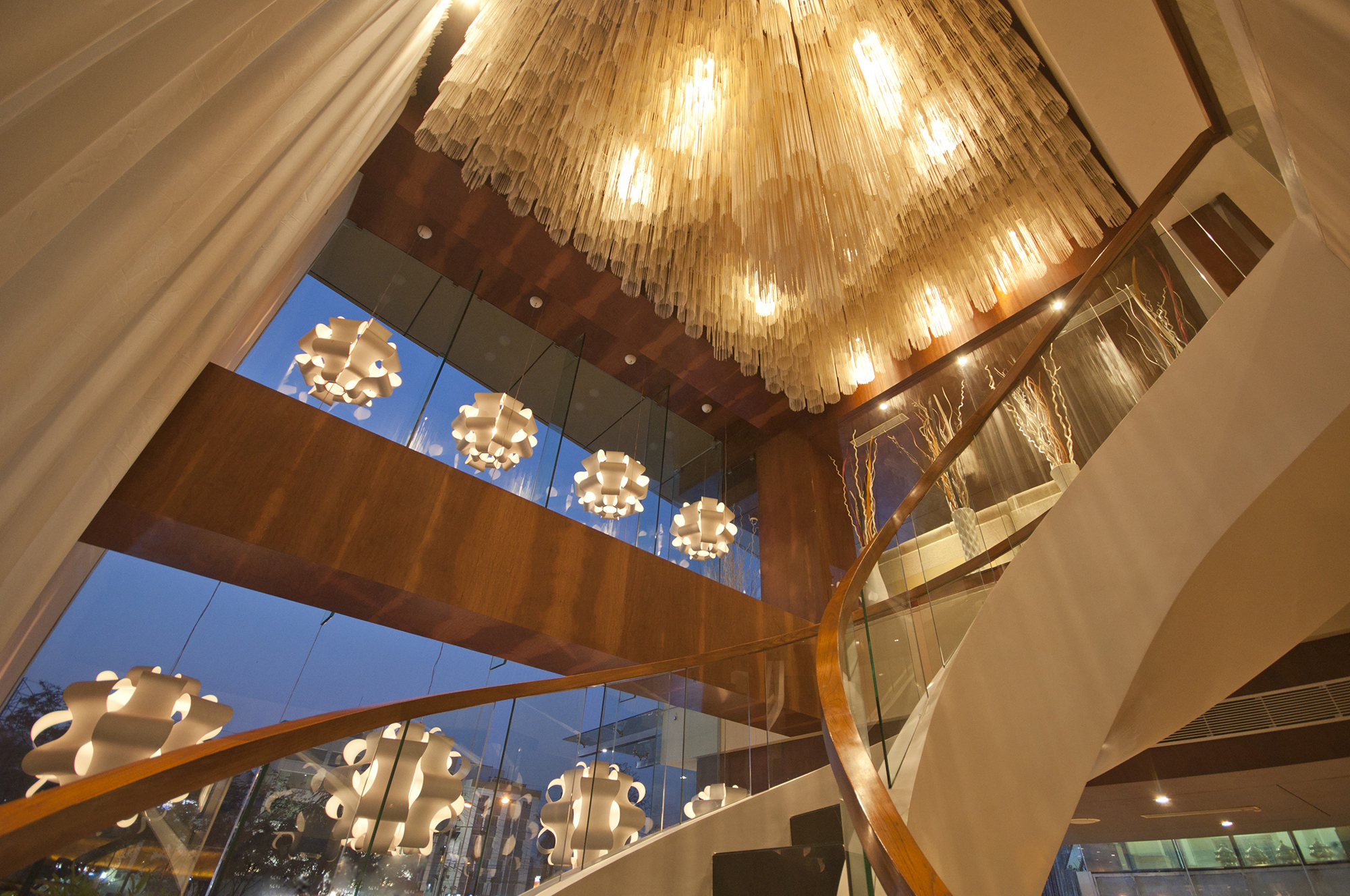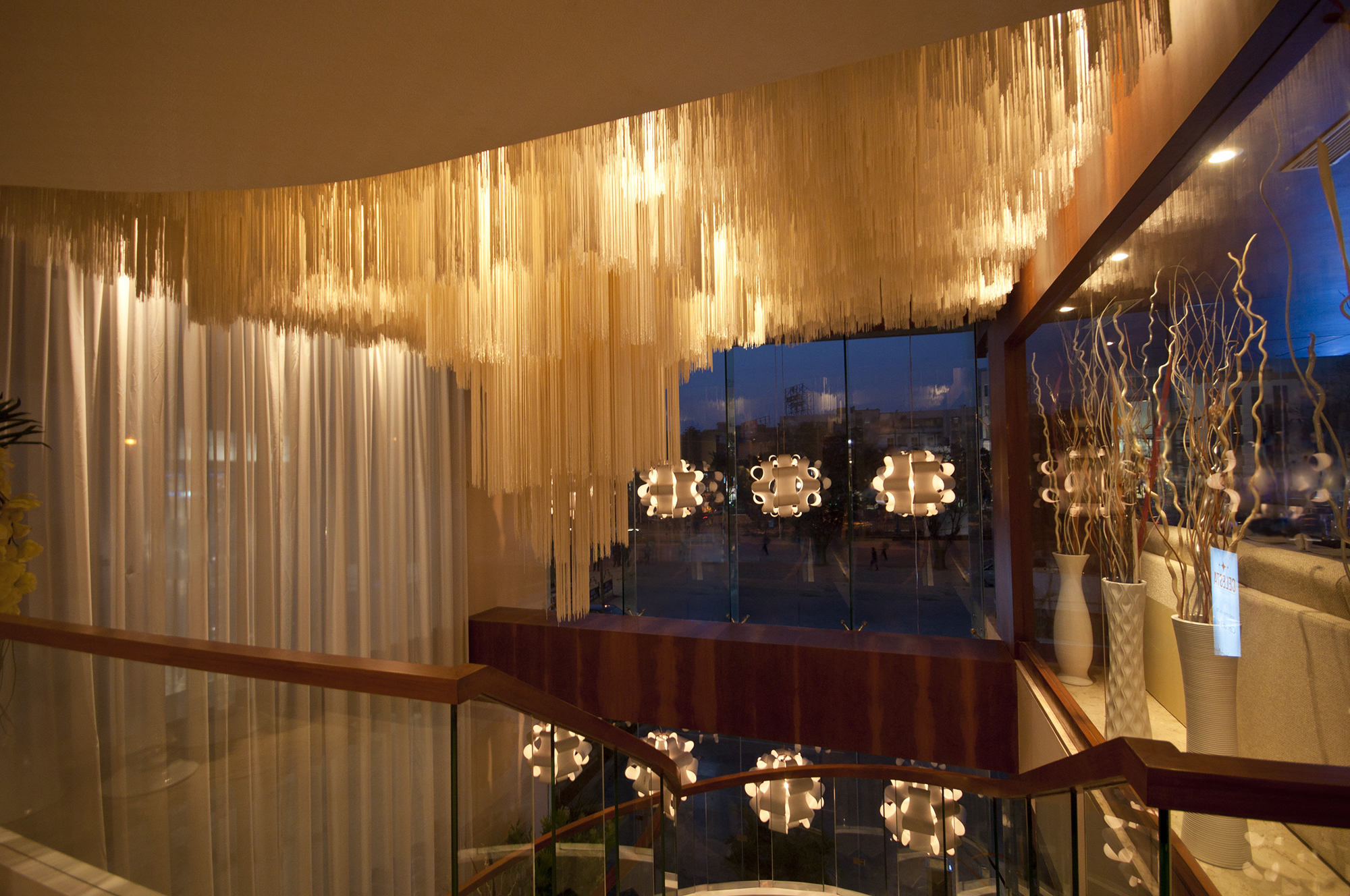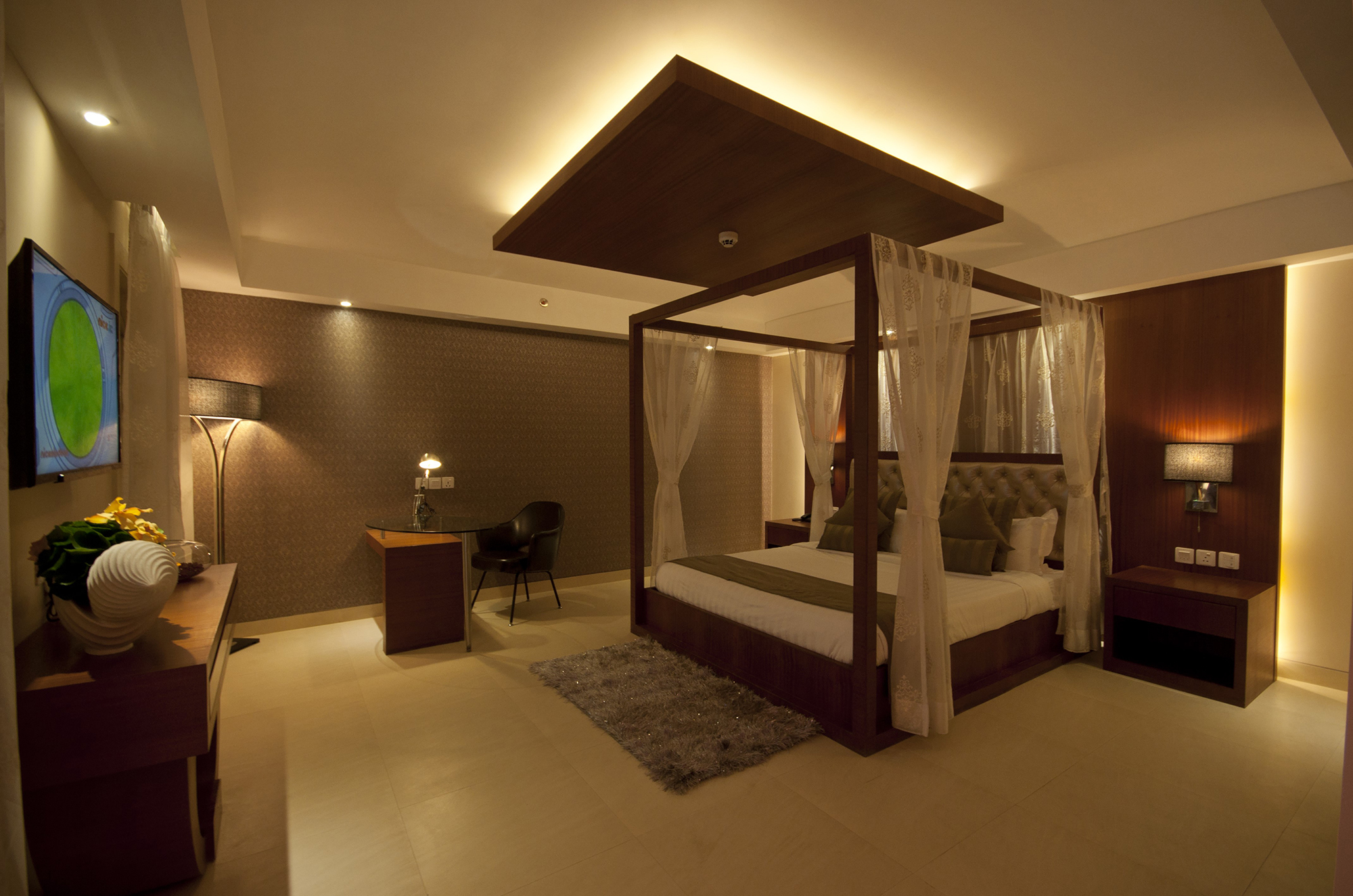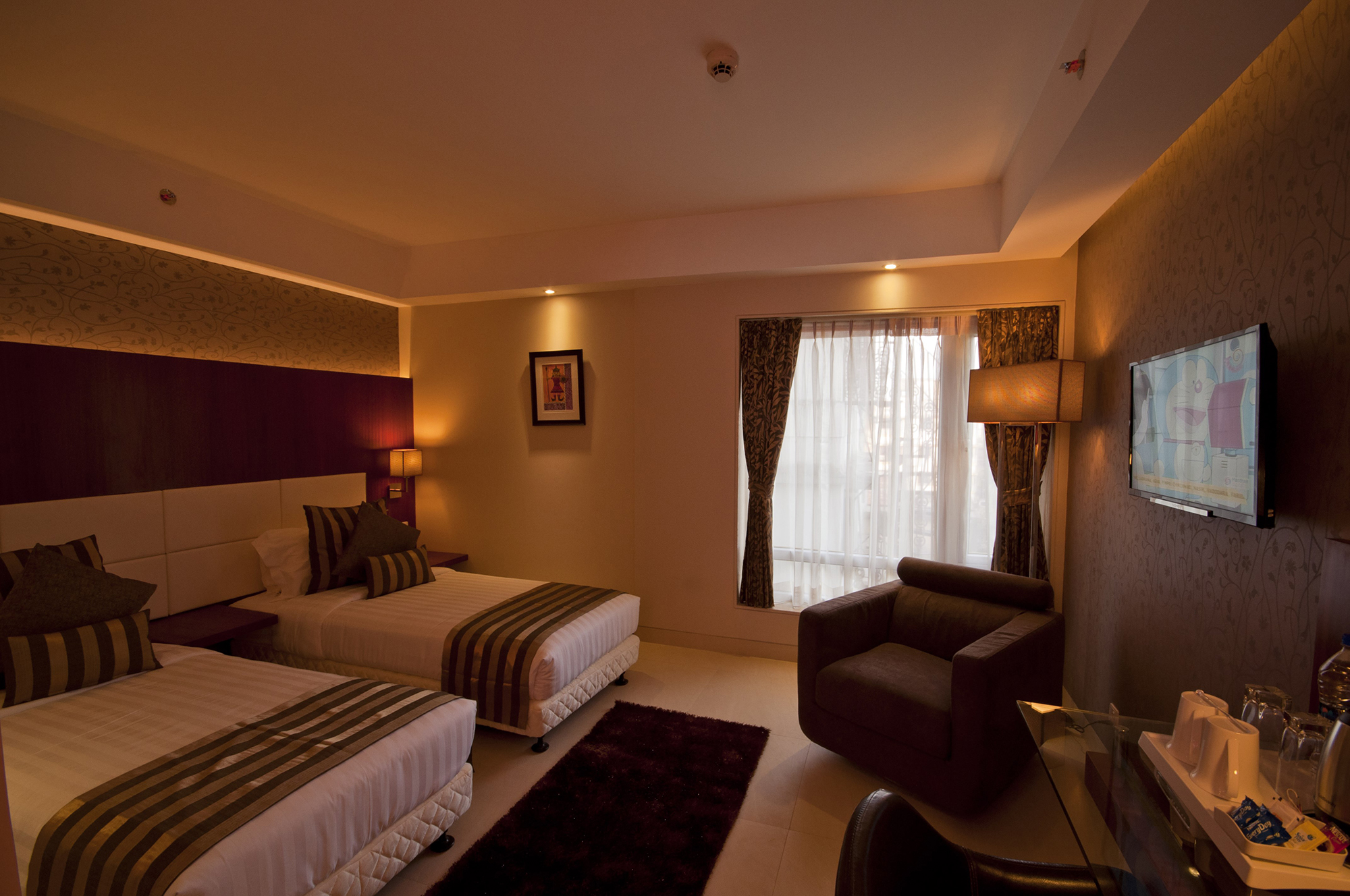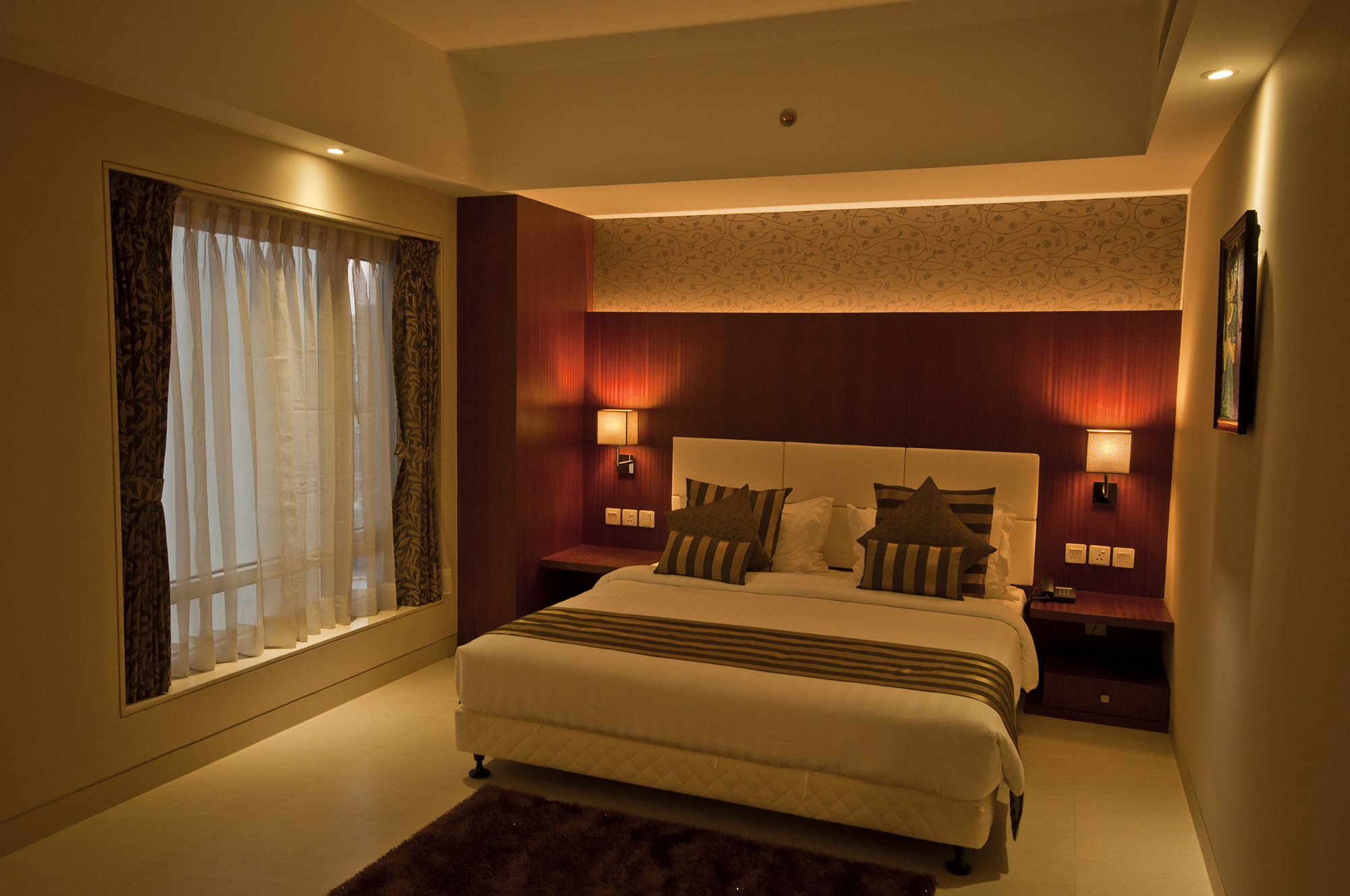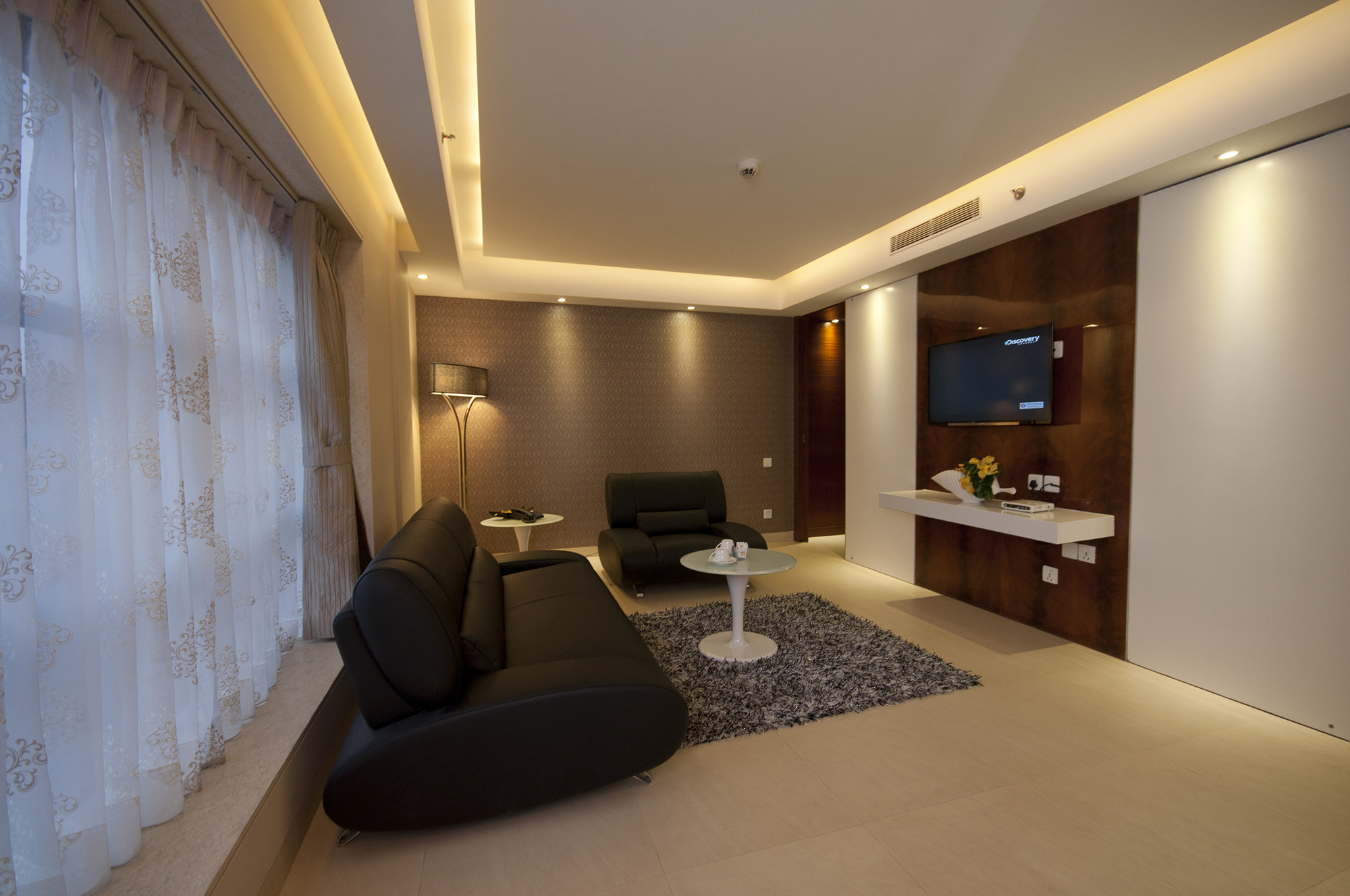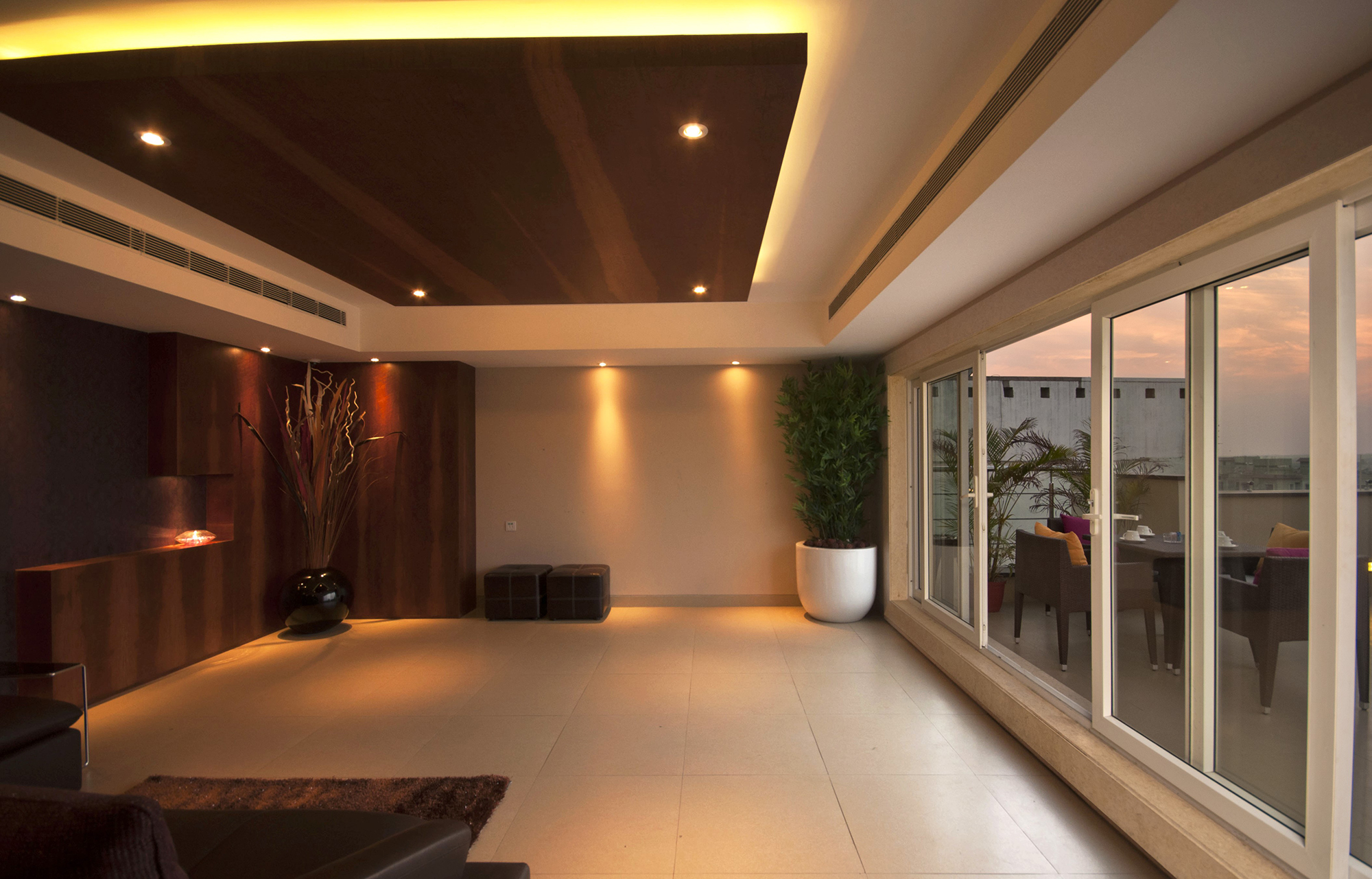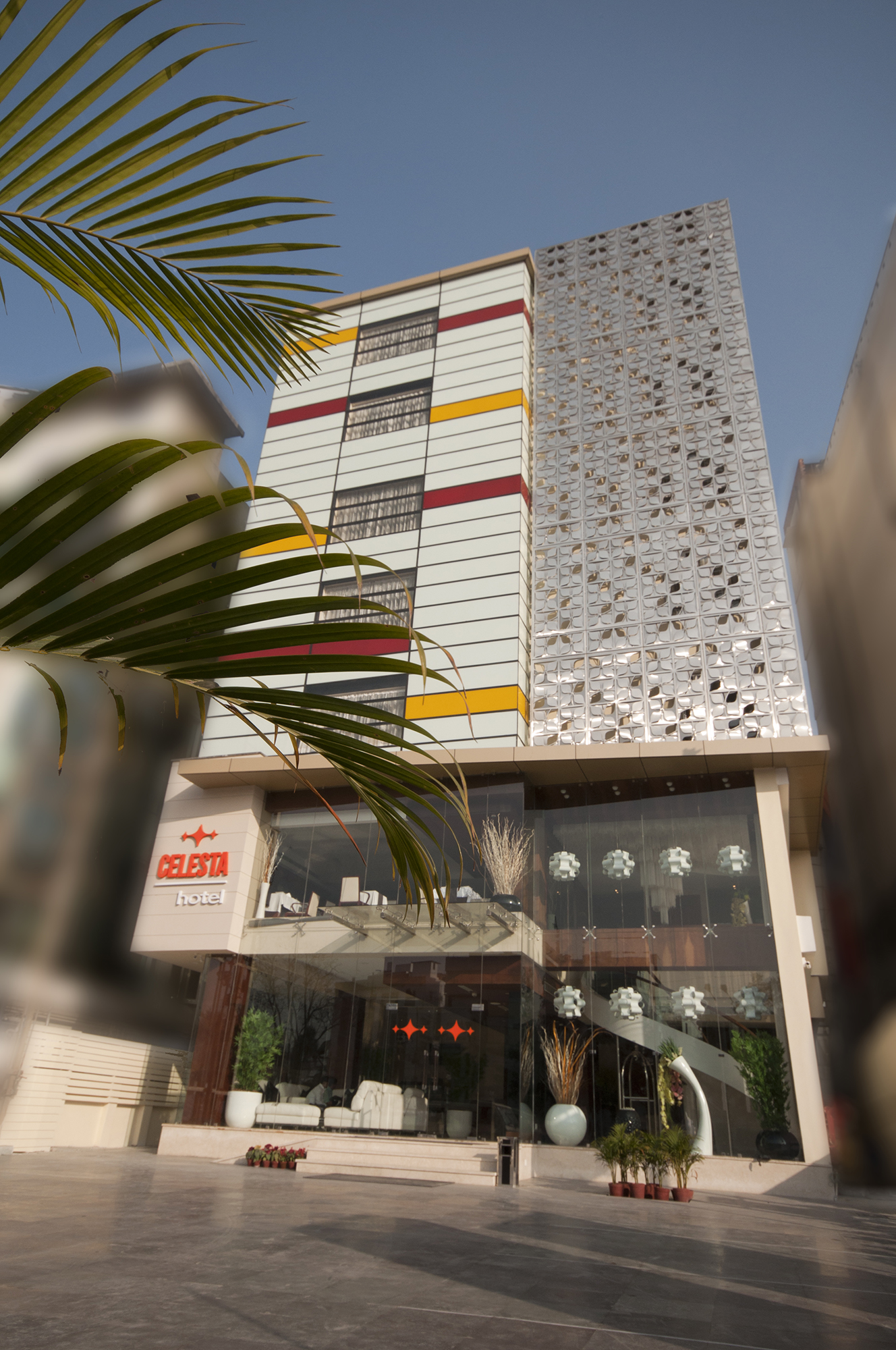HOTEL CELESTA, KOLKATA
Urban projects in India do come with its own share of challenges. Many parts of the city do not have great …
Urban architecture in India does come with its own share of challenges. There are no great views to look out into, other than a very busy & chaotic road, and in most cases, the site would be framed by unpleasant, unplanned construction on both sides. In our case, an existing superstructure meant for residential use had to be converted to a 38 room hotel with similar constraints and design a façade that would somewhat gel and yet differ to stand out from its surroundings.
Large gazed openings with sheer fabric characterizes the lower two floors that house the reception, restaurant, kitchen & service areas, allowing in abundance of natural light all throughout the day; The sheer fabric adding obscurity to the views from inside and out.
Inspired from the peaceful look of the pristine white”kaashphool”, a kind of grass found growing all around this region, the interior tries to emulate the same experience by the use of overflowing white fabric, dark veneer paneling on walls and different planes on the ceiling, that flow seamlessly onto the beige marble flooring only to be accessorized by the white & yellow flowers amidst greenery.
Thus, the peaceful, calm, serene & tranquil look prevails all throughout the space.
A “firangipani” tree also known as the “kathalchaapa” is planted outside providing shade from the south westerly sun.
A stainless steel jalli, inspired from the “firangipani” flower, envelopes the building second floor upwards that serves both as an aesthetic and a shading device.
The “jhalar” or lace is an interesting element that finds prominence in most Indian festivals. Taking a cue from Durga puja pandals, the ceiling above the double height lobby that houses the spiral stair has a threads hanging from the ceiling like a chandelier. Scissor cut on site to predetermined heights, the unevenly cut look adds to the drama when lit up in the evenings. The hanging thread continues inside the restaurant curving itself around beams, thus concealing them and also blurring the stunted look caused by the low height ceiling. A whiff of air, at times, from the air conditioning vents, give these threads a subtle movement that adds dynamism to the design.
The overall design, along with the rooms and the rooftop terrace, tries to be clear & simple, following the functional requirements of the end users and the existing superstructure. The opulence and grandeur expressed with the simplicity of straight lines, devoid of any ornamentation or pretentions, ultimately fulfilling the requirement of functionality & good design.
Location: VIP Road, Kolkata


